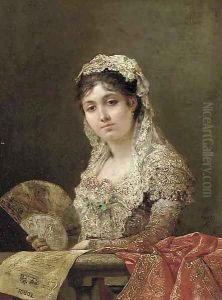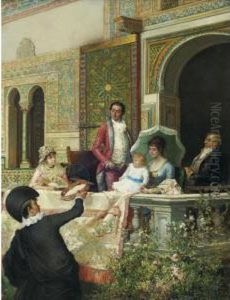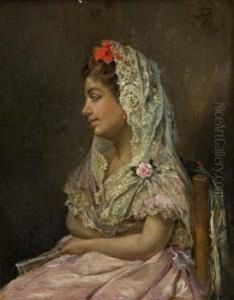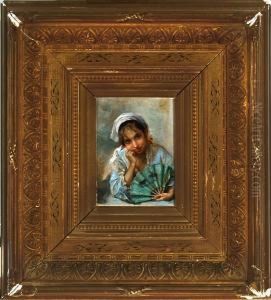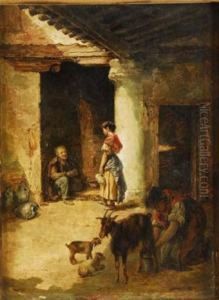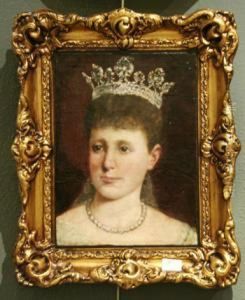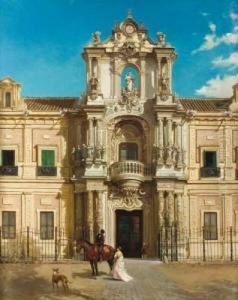Manuel Wessel De Guimbarda Paintings
Manuel Wessel de Guimbarda, born in Cartagena, Spain, in 1833, was a distinguished 19th-century Spanish painter, renowned for his contribution to the art scene through his detailed and evocative works. His artistic journey began in his homeland, but his talent and quest for artistic growth led him to further his studies and career beyond the Spanish borders, notably in Rome, where he was significantly influenced by the Italian masters.
Guimbarda's oeuvre primarily encompasses genre scenes, landscapes, and portraits, each marked by a meticulous attention to detail and a profound sensitivity to the interplay of light and shadow. His paintings not only reflect the technical proficiency but also offer a glimpse into the societal norms and cultural milieu of his time, making his works invaluable to art historians and enthusiasts alike.
Throughout his career, Manuel Wessel de Guimbarda received considerable acclaim, participating in numerous exhibitions and earning accolades that solidified his reputation both in Spain and internationally. Despite his successes abroad, Guimbarda maintained a deep connection with his Spanish roots, which continued to inspire his work.
In addition to his artistic pursuits, Guimbarda also contributed to the cultural and educational spheres in Spain. He was involved in the establishment of art institutions and played a crucial role in promoting arts education, thereby leaving a lasting legacy that went beyond his paintings.
Guimbarda's death in 1905 marked the end of an era, but his art continues to be celebrated for its beauty, technical skill, and historical significance. Today, his works are preserved in several prestigious museums and private collections, serving as a testament to his enduring impact on the world of art.

